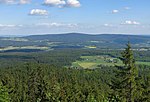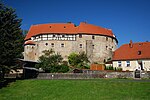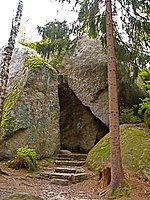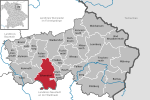Pullenreuth
Municipalities in BavariaTirschenreuth (district)Upper Palatinate geography stubs

Pullenreuth is a municipality in the district of Tirschenreuth in Bavaria, Germany.
Excerpt from the Wikipedia article Pullenreuth (License: CC BY-SA 3.0, Authors, Images).Pullenreuth
Neusorg (VGem)
Geographical coordinates (GPS) Address Nearby Places Show on map
Geographical coordinates (GPS)
| Latitude | Longitude |
|---|---|
| N 49.916666666667 ° | E 12 ° |
Address
95704 Neusorg (VGem)
Bavaria, Germany
Open on Google Maps










